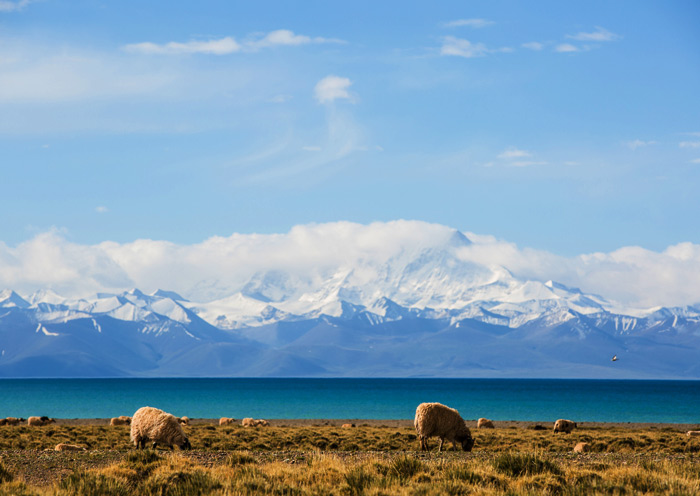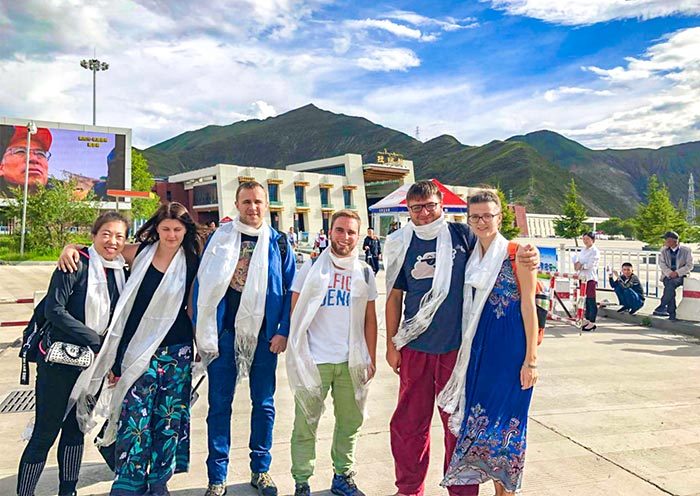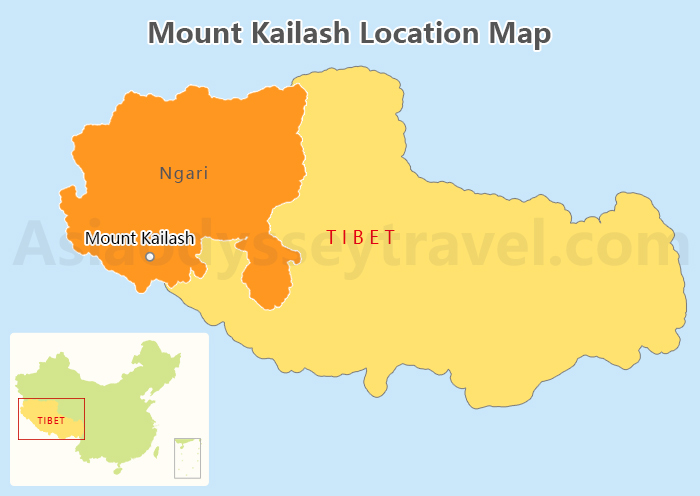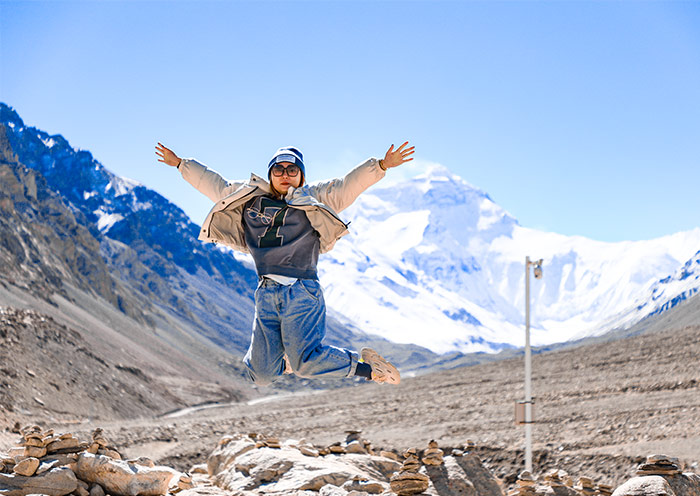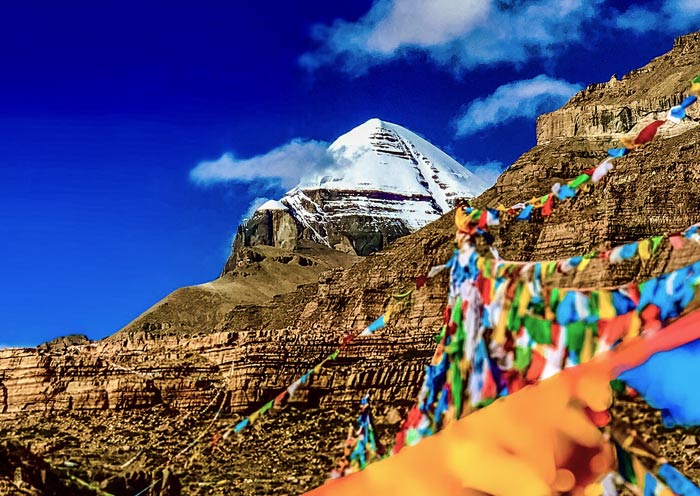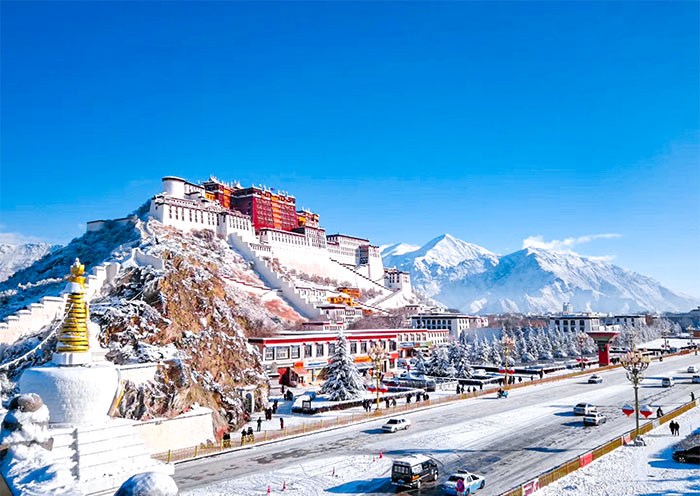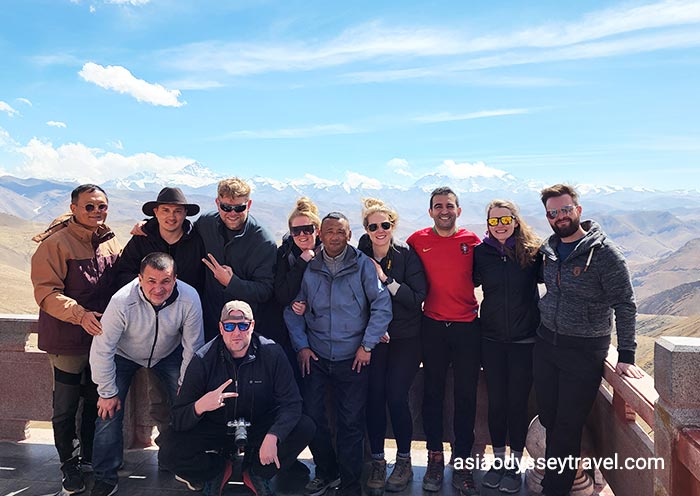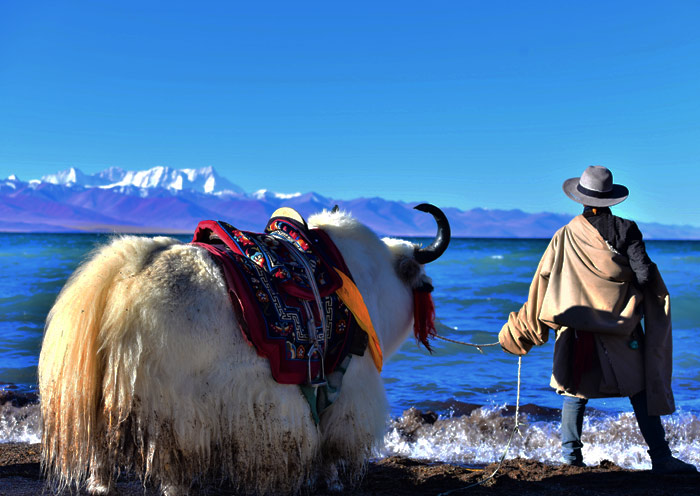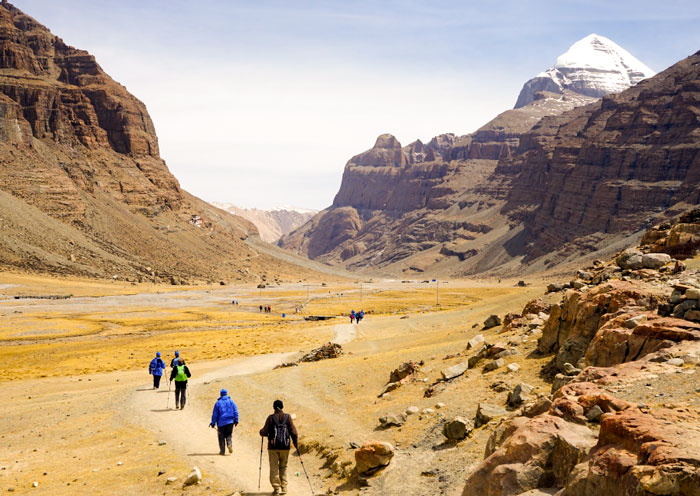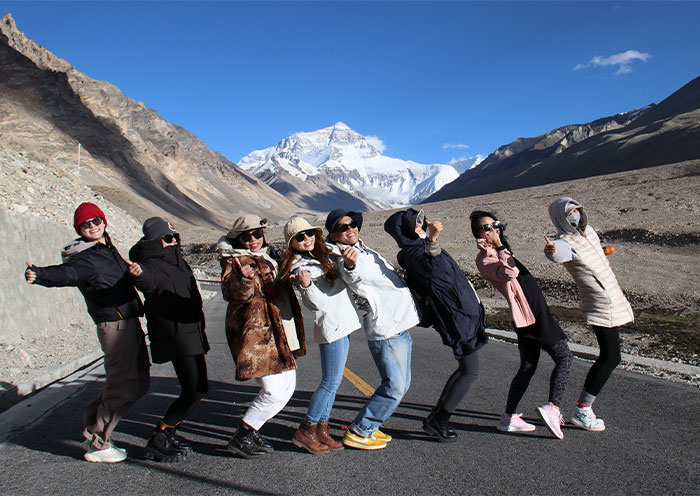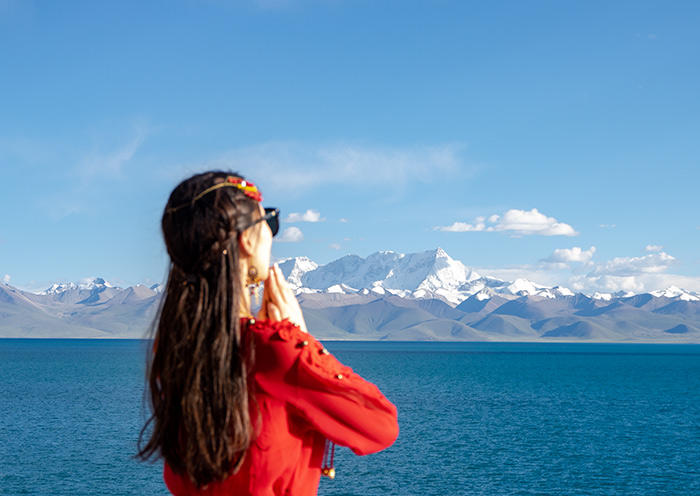1. Potala Palace - The World's Highest Palace
Potala Palace is one of the three UNESCO World Heritage sites in Tibet and the highest palace in the world, perched on the side of Ri Marpo in the center of Lhasa. Potala Palace was first constructed in the 7th century by the Tibetan King Songtsen Gampo and later expanded. It became home to every Dalai Lama from the fifth to the 14th.
The Potala is a structure of massive proportions, covering an area of over 100,000 square meters, and houses temples, palaces, dormitories, office areas, and more than 1,000 rooms. It is like a huge museum of Tibetan Buddhism and an awe-inspiring place to visit, a unique blend of art, history, and spirituality. One of the highlights of a visit to the palace is the Red Palace, which contains the sacred relics of the Dalai Lamas. Visitors can also enjoy the stunning panoramic views of Lhasa city from the palace's rooftop.
Visitors to Potala Palace should be prepared for a physically demanding experience. The palace consists of hundreds of steps and steep inclines, making it challenging for those with mobility issues. However, the effort is worth it as the experience of visiting this cultural and spiritual icon is truly unforgettable.
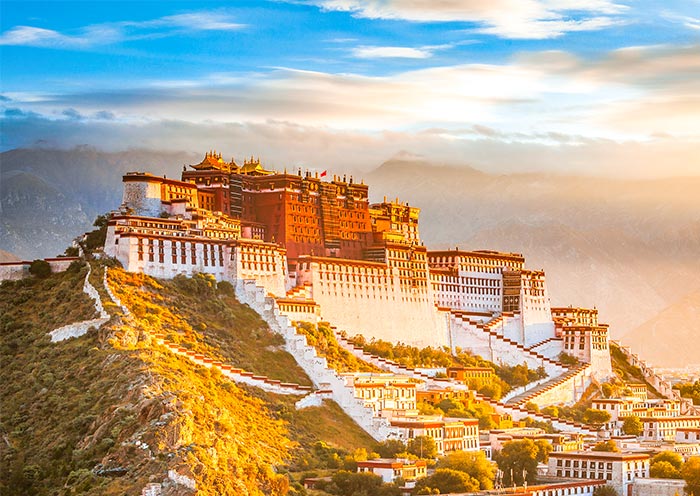
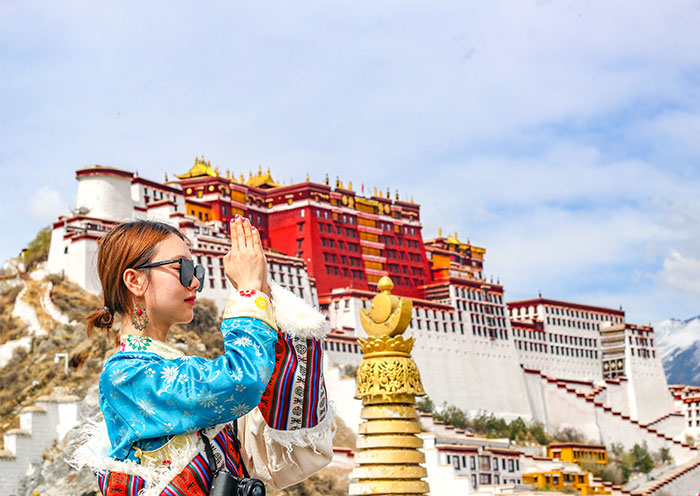
2. Jokhang Temple - The Heart of Tibetan Buddhism
Jokhang Temple, a Buddhist temple located in Barkhor Square, was built during the 7th century by King Songtsen Gampo and was later expanded by successive rulers. Its architectural style is a beautiful blend of traditional Tibetan and Chinese influences.
The Jokhang Temple is home to one of only three statues of Sakyamuni Buddha in the world, which makes it even more special and significant for Tibetan Buddhists. It's considered the most sacred temple in Tibet and the true heart of Buddhism in Tibet . In Tibetan, there’s a saying that Jokhang Temple comes first, then Lhasa city. Therefore you can see among Tibetans, Jokhang Temple has a higher rank than any other place in Lhasa.
At the Jokhang Temple, visitors can also participate in religious ceremonies and events. The temple is a popular spot for the daily kora, a traditional practice of walking around the temple and spinning prayer wheels.
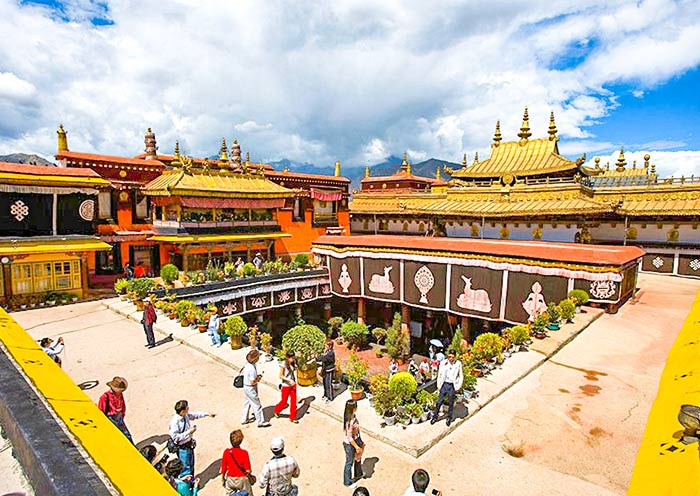
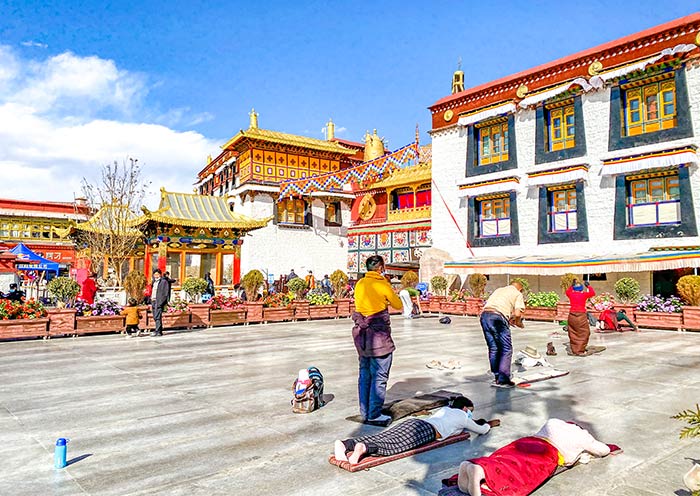
3. Sera Monastery - Witness Tibetan Buddhism Debating
Sera Monastery is a renowned Tibetan Buddhist monastery located at the foot of Tatipu Hill in the northern suburb of Lhasa. It was founded in 1419 by Jamchen Chojey, a disciple of the famous Buddhist scholar Tsongkhapa, and belongs to the Gelugpa sect, Sera Monastery also houses many important Buddhist scriptures, murals, statues, and other cultural relics, making it a significant cultural and religious site in Tibet .
The monastery is famous for its lively debates, which are held every afternoon between 3 pm and 5 pm. Monks gather in the debating courtyard to engage in animated philosophical discussions, with the aim of sharpening their critical thinking skills and deepening their understanding of Buddhist doctrines.
Visitors can explore the various halls, temples, and courtyards within the monastery complex and witness the daily life of Tibetan Buddhist monks. One of the highlights of a visit to Sera Monastery is attending the famous debating sessions and gain a deeper appreciation for Tibetan Buddhism and its intellectual traditions.
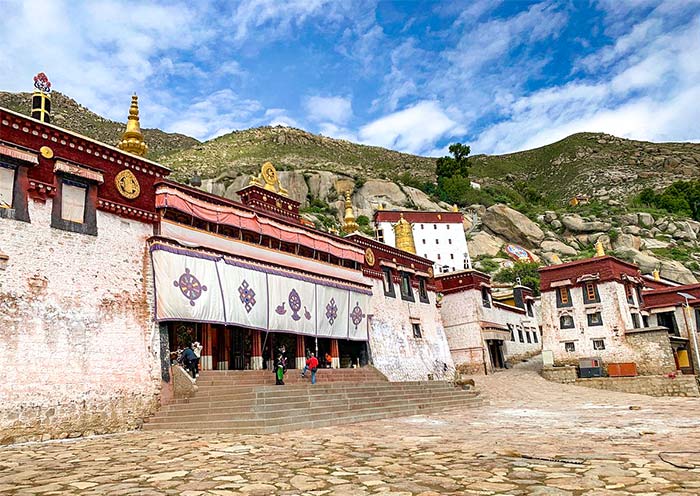
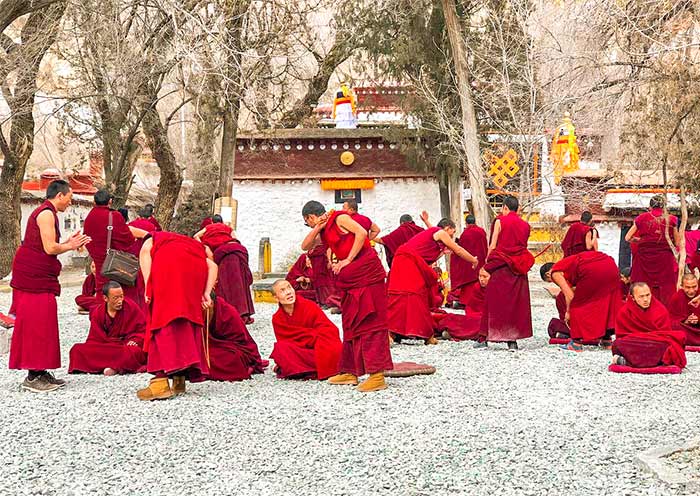
4. Drepung Monastery - Once The World's Largest Monastery
Drepung Monastery is a famous Tibetan Buddhist monastery located at the foot of Mount Gephel, about 5 kilometers from the western suburb of Lhasa. The entire monastery is built by the mountain. Founded in 1416, Drepung Monastery was one of the largest monasteries in the world at its peak, with over 10,000 monks in residence. The monastery was an important center of learning, and many of the most prominent figures in Tibetan Buddhism studied there.
The architecture of the monastery is grand and majestic, with a large number of exquisite murals, statues, and other artworks. The Shoton Festival, one of the largest festivals in Lhasa, is celebrated here. During this festival, visitors can witness the display of giant Buddha Thangka paintings in the early morning, followed by a Tibetan opera performance, making it an extraordinary experience.
Visitors to Drepung Monastery can witness the daily life of monks, attend religious ceremonies and events, and explore the rich cultural heritage of Tibet . The monastery also offers stunning views of the surrounding mountains and Lhasa city.
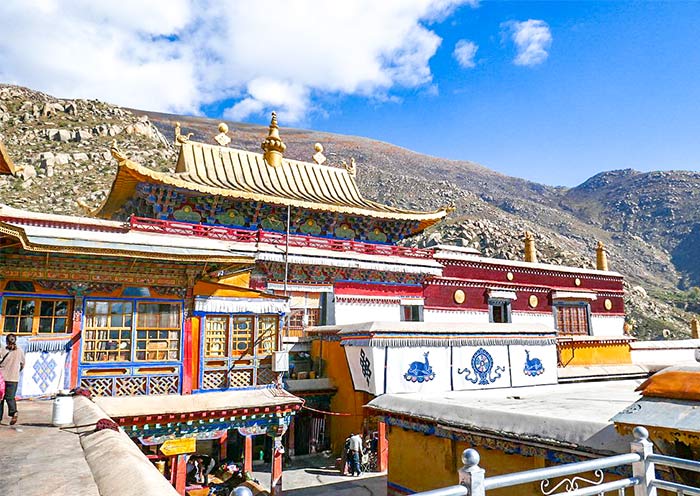
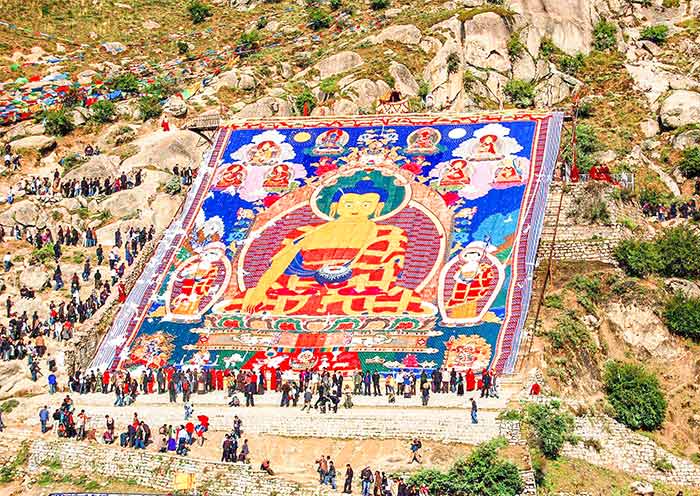
5. Ganden Monastery - Enjoy Breathtaking Lhasa Countryside View
Ganden Monastery is one of the three Gelug University monasteries in Tibet . Ganden means ‘joyous’ in Tibetan and is the name of the Western Paradise (also known as Tushita) that is home to Jampa, the Future Buddha. Located about 50km northeast of downtown Lhasa, at the top of Wangbur Mountain, Ganden Monastery sets in a natural bowl high above the braided Kyi-chu Valley.
Brought back to life after near destruction in the Cultural Revolution, the collection of restored chapels centers on Tsongkhapa’s tomb and offers a delightful kora path. Like other monasteries, this monastery as good houses an assembly hall, chapels, a guesthouse for visitors, and artifacts belonging to Tsongkhapa. Ganden Monastery bestows breathtaking views of Lhasa and Shannan's countryside.
If you only have time for one monastery excursion outside Lhasa, Ganden would probably be the best choice. With its stupendous views of the surrounding Kyi-chu Valley and fascinating kora, Ganden is an experience, unlike the other major Gelugpa monasteries in the Lhasa area.
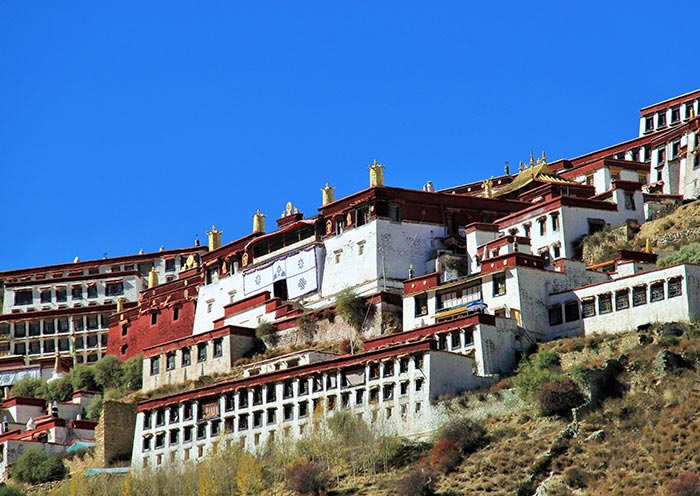
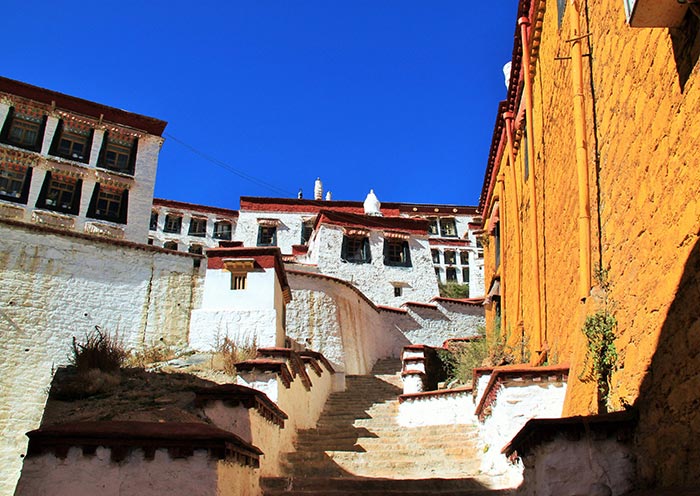
6. Tashilhunpo Monastery - Traditional Seat of Panchen Lamas
Tashilhunpo Monastery is a historic and culturally significant monastery located in Shigatse, Tibet . It was founded in 1447 by Gendun Drup, the first Dalai Lama. And it served as the traditional seat of the Panchen Lama, the second-highest-ranking lama in Tibetan Buddhism. The most impressive structure in the monastery is the Maitreya Chapel, which houses the world's largest gilded statue of Maitreya Buddha, standing at 26.2 meters tall.
A visit to the Thangka Exhibit Platform is a major highlight of Tashilhunpo Monastery. Every year, three days before and after May 15 on the Tibetan calendar, a grand Buddha exhibition is held at Tashilhunpo Monastery. Three large-scale Buddha statues, representing the past Buddha (Buddha of Immeasurable Light), the present Buddha (Shakyamuni Buddha), and the future Buddha (Qiangpa Buddha), are displayed. Monks and believers come to worship, offer their Hada, and kowtow to the Buddha, hoping to dispel disasters and bring good fortune to the world.
The Tashilhunpo Kora is another notable feature of the Tashilhunpo Monastery. For centuries, people have walked along the few-kilometer-long lane that runs along the outer wall of the monastery. Whether it is sunrise or sunset, there are always people walking quietly on the Kora.
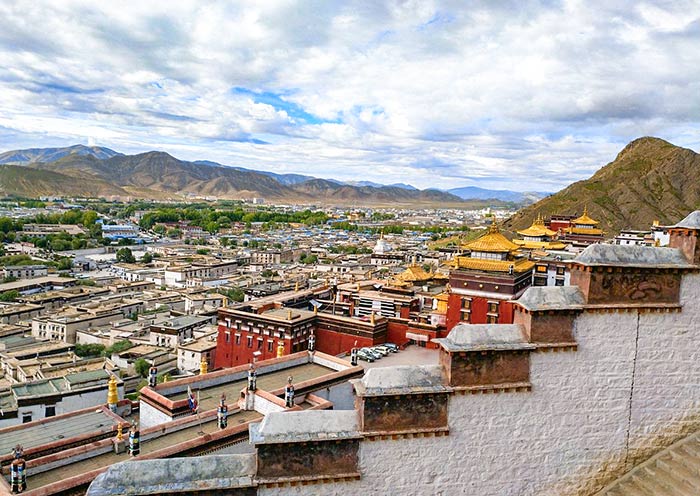
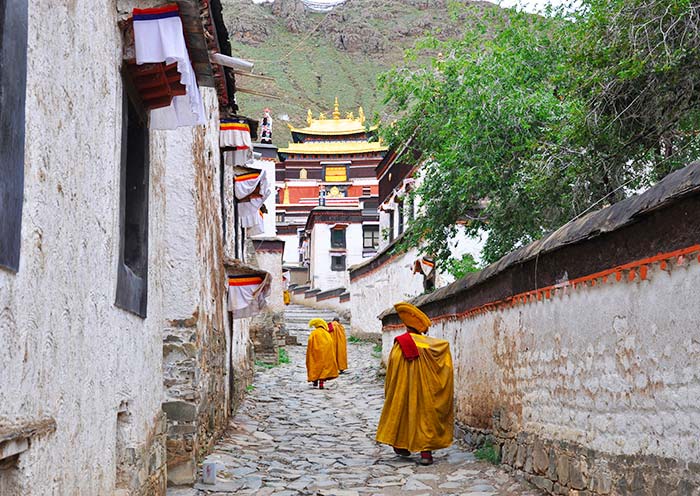
7. Palcho Monastery - The Harmonious Coexistence of Three Major Sects of Tibetan Buddhism
Palcho Monastery, also known as Pelkor Chode Monastery or Shekar Gyantse, is a significant Tibetan Buddhist monastery is located on a hill overlooking the town of Gyantse, Tibet . It was founded in the 15th century and is a unique structure as it represents the harmonious coexistence of three major sects of Tibetan Buddhism - Gelug, Sakya, and Kagyu.
One of the main highlights of Palcho Monastery is the Kumbum Stupa, which is also known as the "Stupa of 100,000 Images". It is a remarkable structure that features impressive murals and intricate sculptures depicting the life of the Buddha. Visitors can climb to the top of the Kumbum for panoramic views of the surrounding countryside.
A visit to Palcho Monastery allows you to witness stunning architecture and learn about Tibetan Buddhism. The monastery is a peaceful and tranquil place, surrounded by stunning natural scenery, A climb up the nearby Gyantse Dzong will give you a clear bird's-eye view of the original extent of the complex.
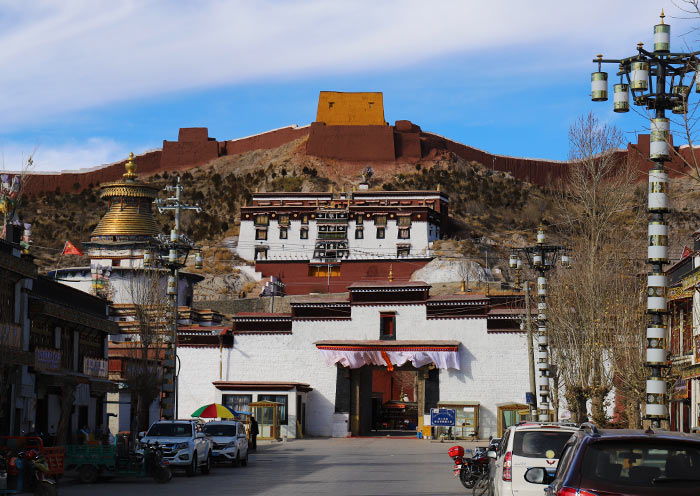
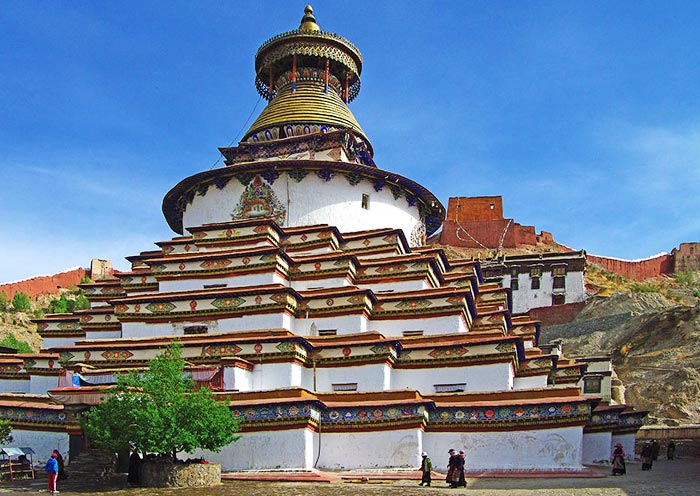
8. Rongbuk Monastery - The Highest Monastery in the World
Rongbuk Monastery is a Tibetan Buddhist monastery located in the remote Rongbuk Valley, near the base of Mount Everest in Tibet . It is the highest monastery in the world, sitting at an altitude of 4,980 meters (16,340 feet) above sea level. The monastery was founded in 1902 and has since become a popular destination for tourists and mountaineers visiting Mount Everest.
The Rongbuk Monastery is known for its stunning views of the Himalayan mountains and the nearby Mount Everest, which towers above the monastery at a height of 8,848 meters (29,029 feet). Visitors can also witness the daily life of the resident monks and participate in religious ceremonies.
One of the main attractions of Rongbuk Monastery is the spectacular sunrise view of Mount Everest from the nearby Everest Base Camp. Visitors can take a trek from the monastery to the base camp and witness the breathtaking views of the world's tallest mountain. It is truly a once-in-a-lifetime experience that should not be missed.
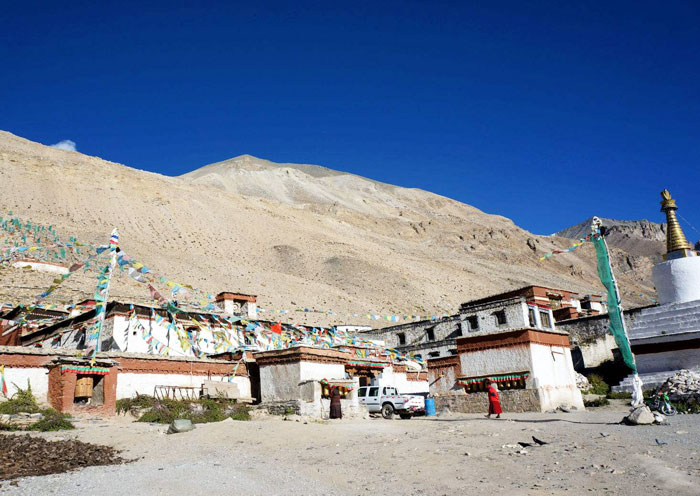
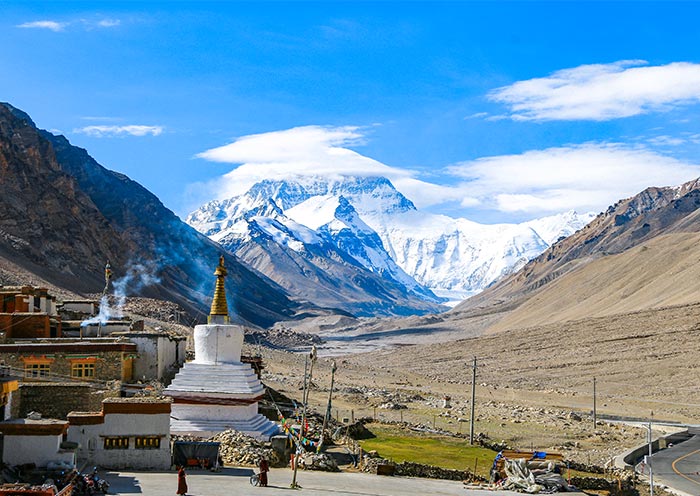
9. Samye Monastery - The first Buddhist Monastery in Tibet
Samye Monastery is the first Buddhist monastery established in Tibet , located in Dranang County of Shannan City. The dreamy location on the desert-like banks of the Yarlung Tsangpo is superb. It is considered a significant landmark in the history of Tibetan Buddhism as it marked the beginning of Buddhism in Tibet .
Tibet 's first monastery is a heavily symbolic collection of chapels, chortens, and shrines arranged around a medieval Tibetan-, Chinese-, and Indian-style temple. Samye Monastery is built in the shape of a mandala, a symbolic representation of the universe in Buddhist cosmology. The central temple, known as the Utse, is surrounded by four smaller temples, which represent the four continents of Buddhist cosmology. It is home to many important statues and relics and also features stunning murals and other artworks.
The Samye Monastery offers an opportunity for visitors to explore the rich history and culture of Tibetan Buddhism. The monastery's serene and breathtaking natural surroundings provide a peaceful atmosphere, making it an ideal place for meditation, reflection, and spiritual contemplation. Visitors can take a leisurely walk around the perimeter of the monastery while spinning prayer wheels, adding to the tranquil ambiance.
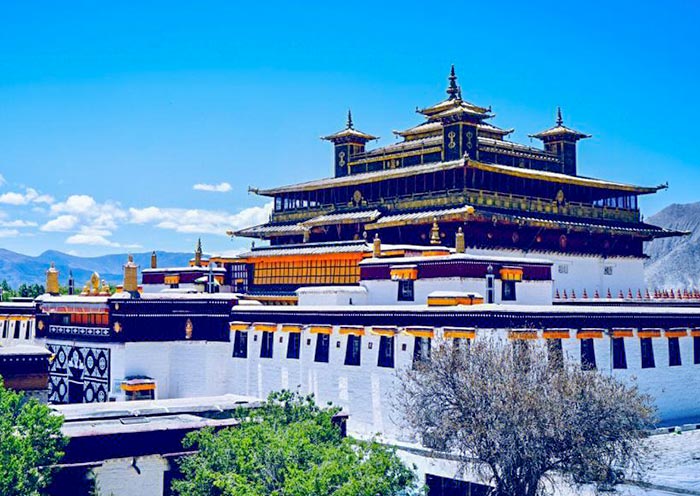
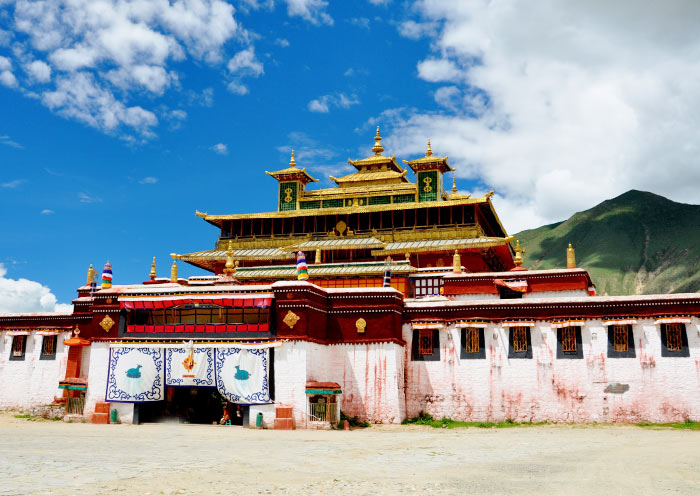
10. Sakya Monastery - The Impressive Tibetan Library
Sakya Monastery is the principal monastery of the Sakya sect of Tibetan Buddhism, located in Sakya County of Shigatse, on a small hillside on the road to Tingri. The monastery houses important artifacts and relics of Sakya abbots, as well as a massive library with as many as 84,000 scrolls, most of which are believed to be Buddhist scripture. In addition to its cultural and religious significance, Sakya Monastery is also an important center for education and learning.
Unlike other monasteries in Lhasa, its walls are painted in red, white, and grey stripes, which represent Manjushri, Avalokiteshvara, and Vajrapani, as a special architecture to distinguish it from other Buddhist schools. Another highlight of this monastery is where the famous Cham Dance Festival takes place every year. The Cham dance is a Tibetan Buddhist ritual dance performed by monks and accompanied by traditional musical instruments.
As the monastery is located just 25km off the Friendship Highway, it is a must-visit destination in Tibet . Driving takes you to this brooding, massive grey-walled fortress-like building. If you visit during the festival, you will have the chance to witness the monks performing holy dances and religious ceremonies.
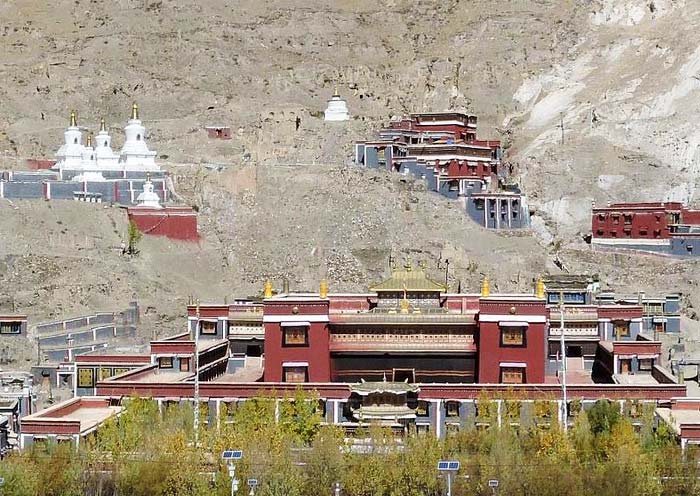
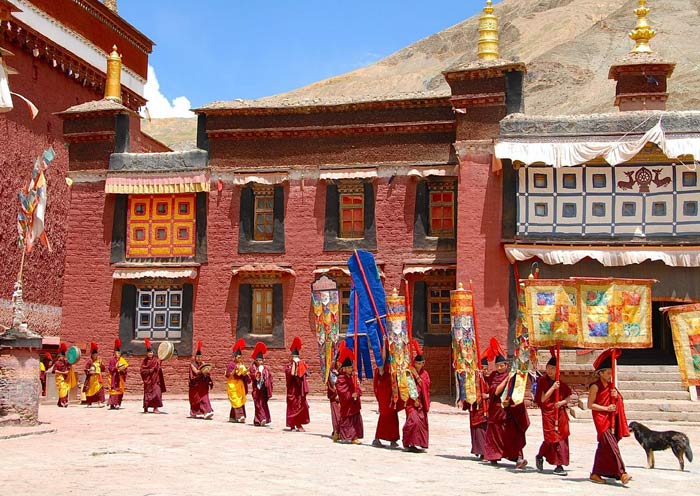
Travel Tips for Visiting Tibetan Monasteries
1. Dress modestly and respectfully, covering your arms and legs. It is considered disrespectful to wear revealing clothing in monasteries.
2. Respect the monks and nuns by not interrupting their prayers or activities. If you wish to speak to them, do so in a quiet and respectful manner.
3. Do not take photographs without permission. Some monasteries may have specific areas or items where photography is not allowed, so it is important to ask for permission before taking photos of people or sacred objects.
4. You may be required to take off your hat or scarf with you and also remove your shoes before entering any chapel or temple within the monastery.
5. It is considered disrespectful to touch or point at sacred objects, such as statues or prayer wheels. Do not climb on any structures within the monastery. Do not touch or remove any religious objects.
It is also important to be aware of any local customs or taboos, such as not walking on certain areas or avoiding certain foods. Always ask your guide or a local for advice and guidance.
How to Plan Your Tibet Tour including Tibetan Monasteries?
If you're a first-time visitor to Tibet , we recommend spending 8 to 15 days exploring the region including some of the stunning monasteries and temples. This will give you enough time to acclimate to the high altitude, as well as to visit some of the most important cultural and historical sites in the area.
Tour Lhasa city and surroundings 4 Days or 5 Days
For 4 days, it is highly recommended to visit Lhasa Private Tour for Best Highlights
For 5 days, it is highly recommended to visit Lhasa Essence Tour with Great Three Monasteries
Add 2 or 3 More Days to Visit Gyantse & Shigatse
For 5 days, it is highly recommended to visit Lhasa & Yamdrok Lake Private Tour
For 6 days, it is highly recommended to visit Lhasa Yamdrok Lake Shigatse Private Tour
Add 2 More Days to Mount Everest
For 7 days, it is highly recommended to visit Tibet Nepal Overland Tour from Lhasa to Gyirong via EBC
For 8 days, it is highly recommended to visit Tibet Discovery Tour from Lhasa to Mount Everest Base Camp
To extend further, you can cover Mount Kailash (3 Days), Guge Kingdom & Zanda Earth Forest (1 Day), Namtso Lake (1 Day), etc.
9 Days Panorama Tibet Tour from Lhasa to EBC with Namtso Lake
15 Days Mount Kailash Pilgrimage Tour with Lhasa Shigatse & EBC
Explore Tibet with Asia Odyssey Travel
Local based in Lhasa and Tibet for over 10 years, our local team at Asia Odyssey Travel has carefully designed Tibet tours that offer a truly authentic and unforgettable experience. You can choose to travel in the comfort of a private tour with a flexible itinerary or join a group tour that's budget-friendly without compromising on quality. Whatever your preference, Asia Odyssey Travel has a tour that caters to your needs and desires, ensuring that your journey to Tibet is an unforgettable adventure.

